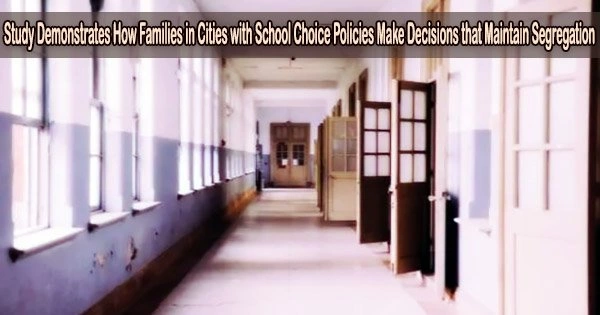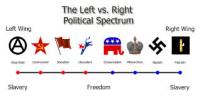Despite Brown v. Board of Education’s 1954 ruling banning it, racially segregated schools have continued to exist in reality. White residents have been migrating to city centers in recent years, reversing the decades-long pattern of whites fleeing to the suburbs in some locations.
In one of these cities with a school choice legislation, new study from the University of Kansas reveals that despite additional options for integration, families are choosing to maintain school segregation.
Washington, D.C., is a major metropolitan area with a school district policy that allows parents to choose the school their children attend. In recent years, data have revealed that white families are moving back to the center of the city. While this might theoretically result in more integrated schools in a city with a significant minority population, a new study demonstrates that this is not the case.
Families who frequently switch schools to enroll their children in the best ones do not speak up to try to improve the schools, and some even manipulate the lottery system that is intended to distribute kids fairly among systems.
The study’s principal author, Bryan Mann, an assistant professor of educational leadership & policy studies at KU, spoke with nine white parents about how they selected the schools for their kids. This was part of a broader study that interviewed 20 parents and triangulated findings with GIS mapping and quantitative data.
This portion of the study used Exit, Voice, Loyalty, a framework common in organizational theory and political research. It examines why people choose to stay with or leave an organization.
The decision to leave a system reflects exit, the decision to stay reflects loyalty, and the decision to promote systemic changes and improvements reflects voice. The study, written with Annah Rogers of the University of West Alabama, was published in the journal Urban Education.
If the ideal is a fully integrated school system, it’s barely trending in that direction, and it is not reaching the ideal. These lessons are important because policymakers across the country are debating similar ideas, and understanding the outcomes of such policies is vital. This can be an early indicator of what to expect with these types of choice policies.
Bryan Mann
“When you think about community-driven school reform, you think about loyalty and how parents use their voice to change things. I was curious about the school ecosystem in D.C. that has gentrification and if it still tracks with these ideas of loyalty and voice,” Mann said. “Here people can exit a school or exit the system altogether and go to a private school. We found those who have the tools to exit or work within the system to move are more likely to move. That’s part of what exacerbated school segregation.”
The study concentrated on in-depth interviews with city newcomers whose kids went to neighborhood schools. It questioned parents what they valued in a school and how they behaved in making their decisions as part of a larger study on gentrification and its implications on school integration and choice. Interviewees expressed logistical values such as commute time.
Many others claimed they wished to stay away from schools close to the city center since the long commutes caused by heavy traffic would be worse. However, individuals with the resources reported coming up with alternative solutions to get over these worries, such as flexible work arrangements if doing so enabled them to enroll their child in a desired school.
Additionally, parents stated that they appreciated bilingual curricula and schools that funnel students from one elementary into a prominent middle school. Low-performing schools were said to be schools to avoid, not improve.
Few parents brought up the racial makeup of the schools, but those that did said it was best to steer clear of any with sizable minority populations.
Parents commonly admitted to participating in the annual lottery run by the school system. Based on available seats and where a family lives, the lottery is designed to distribute children among schools in an equitable manner.
However, parents admitted that they would enter their kids each year in the hopes that they would be chosen for the program they most desired. They even reported trying to game the system, which is what it’s designed to stop, by setting up a mailing address near the school they wanted.
“This shows there is competition between children for spots in schools. This is different than competition between schools for children. Competition for spots undermines improvements and equality for schools,” Mann said. “Families showed that with all the ways they compete. It’s a lottery system that is supposed to be fair and ‘ungameable.’ But they still found ways to try to get the schools they viewed as prestigious.”
Parents also routinely mentioned the importance of “playing the long game.” If parents weren’t successful the first time, they would try again the following year in the hopes of enrolling their youngster in a superior elementary school, which would then prepare them for middle school.
Public and charter schools are included in the lottery method, and children who did not obtain the school they preferred also claimed that switching schools was simpler in transitional stages like pre-K/kindergarten, fifth, and ninth grades.
Others claimed to be willing to leave the city to avoid attending schools they disliked or to send their kids to private schools in addition to gaming the system.
“Exit is the default, and disloyalty is the norm,” Mann and Rogers wrote about the findings that showed parents rarely used their voice in an attempt to improve schools and preferred leaving schools or the system.
The strategies and choices of parents in the study are important to consider, as “the long game remains separate and unequal,” the authors wrote. Census data shows that in 1954, D.C. public schools enrolled 57% Black/minority and 43% white students with complete segregation. The Brown decision led to white flight on a large scale, and by 1990, the percentages were 96% and 4%, respectively.
Gentrification from 2000 to 2019 shows that trend reversing, but not equally, as the authors cite data that shows white enrollment in D.C. schools was 11.9% in the 2018-19 school year, even though white city population had increased to 39.6% in 2020. Racial segregation is persisting in the city’s schools, the data shows.
The findings should be taken into account in the national discussion of school choice policies because they show that these policies tend to maintain school segregation because wealthy families and those with resources use the systems to their advantage rather than working to improve less prestigious schools.
Parents were pushed by the market-based school and housing system to campaign for bettering choice mechanisms rather than bettering the schools themselves, even when they expressed concerns about other children, neighborhoods, and schools.
“If the ideal is a fully integrated school system, it’s barely trending in that direction, and it is not reaching the ideal,” Mann said. “These lessons are important because policymakers across the country are debating similar ideas, and understanding the outcomes of such policies is vital. This can be an early indicator of what to expect with these types of choice policies.”
“People don’t often talk about what happens when parents are competing for spots in schools. Here it resulted in continued segregation, and we were able to get a better understanding of how families made the decisions that led to it.”
















